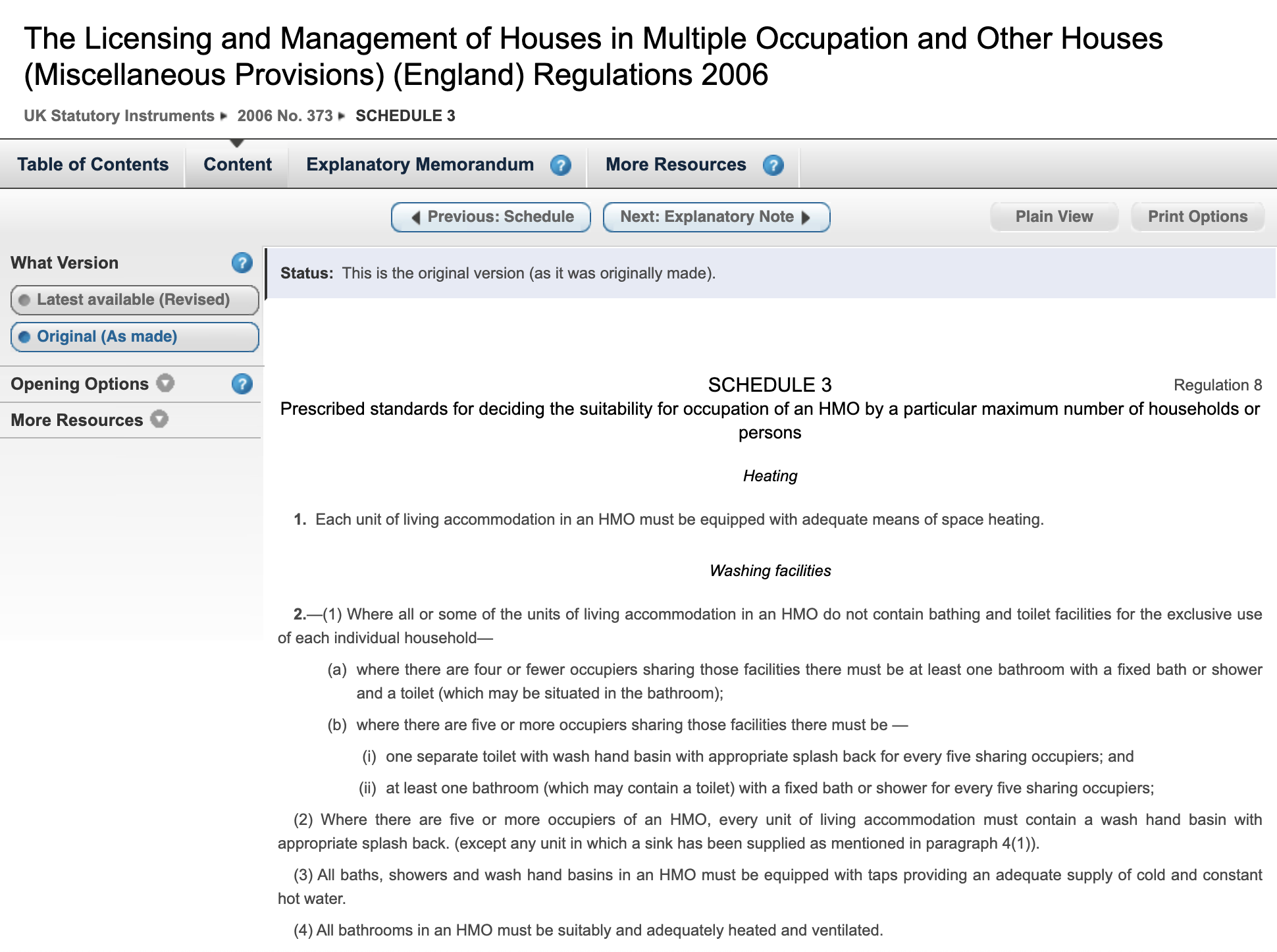This post is going to show you all of the different HMO running costs you’ll need to be aware of and factor into your calculations when analysing potential HMO deals, and calculating the ongoing profitability of your HMO portfolio.
This comes from over a decade of experience…
Owning and managing hundreds of rooms….
And insights from our students who have built their own HMO portfolios.
Let’s get started:
- HMO Mortgage Payments
- HMO Letting Agents & Management Fees
- HMO Insurance Costs
- HMO Utility Bills
- HMO Council Tax
- HMO Broadband & TV Packages
- HMO Cleaning Fees
- Maintenance & Voids
- Are HMOs still profitable in 2022?
Houses of Multiple Occupancy (HMO) continue to be the buzzword in the property industry, despite increased discussions around nationwide Article 4 roll out, council tax banding on individual rooms, and a glut of properties coming onto the market.
The reason for this gold rush is that the figures thrown around by investors are enough to make anyone giddy with excitement. ‘Retire on one deal!’ or ‘Make £1,500 per property per month!’ do sound appealing, and whether you’re looking at it from a rental income, yield, or ROI perspective, the numbers are very appealing.
So what’s the truth behind all of the top line figures?
Are HMOs as lucrative as the plethora of training courses would have you believe?
We’ve been investing in HMOs for over a decade now.
Starting off with an accidental 3 bedroom flat-share in Newcastle in 2009 made us realise the profitability even of these smaller options. And more recently focussing on larger, commercial to residential HMO conversions have allowed us to scale our income rapidly compared to other strategies like simple buy-to-lets.

With these years of experience, I thought I’d share the breakdown of monthly running costs we have to deduct from our rental income before we get to see how much money we’re really making from our HMOs.
Some of these running costs are fixed, and some are variable, some are paid monthly, and some annually, but we feel these should all be taken into consideration for the majority of HMO properties.
We originally wrote this post with details from one of our specific projects (a 6 bedroom HMO, converted from a 2 bedroom terraced house).
We’ve left in these details and updated the figures to represent today’s rates, as well as provide more general observations from our wider portfolio to help you understand what your own costs might look like.
And if you’re ready to dig into HMO investing in more detail, the best place to start is with our free guide to HMO investing, including:
- An overview of the current HMO market
- The different types of HMO projects
- Case studies of some of our favourite HMO projects
- & answers to our most frequently asked HMO questions
You can download this free guide here >>
HMO Mortgage Payments
General Observations
Mortgage payments go without saying really, unless of course you’re fortunate enough to own the property outright (although is that really the most effective use of your capital?).
Mortgages will vary from house to house depending on the level of borrowing, the lender, type of finance (commercial or residential etc). We previously based our calculations for deal analysis at 5.5% APR and a 75% LTV (loan to value).
As interest rates continue to rise however, your HMO finance costs will likely get more expensive. Following the most recent market uncertainty, many lenders in October 2022, many lenders returned to the market with HMO mortgages between 6-8% APR.
These may start to creep down again, but it’s prudent to build some contingency into your analysis going forwards to see what the worst case scenario might look like.
6 Bedroom HMO Example
Our 6 bedroom HMO was initially mortgaged with Kent Reliance in 2016. We opted for them as they were offering an 85% LTV product at 5.39%
The house was valued at £155,000, meaning we would be borrowing ~£132,000.
We refinanced again with Kent Reliance 5 years later, and due to the increase in value of the property, we were able to reduce the LTV to 75%, giving a new interest rate of 3.79% for 5 years.
Monthly Mortgage Payments – £432.79
HMO Letting Agent Fees
Opinions are split on whether you should use a letting agency or not to manage your property. On the one hand, nobody will care about your property quite as much as you do, but on the other hand I’m sure you didn’t become a property investor to replace one job with another.
I fall into the latter camp, so use a letting agent to manage our portfolio (although we chose to start our own letting agency, rather than employ a 3rd party).
Rates for HMO property management would typically be 10-15% of monthly rent collected, which may or may not be subject to VAT on top of that depending on who you use.
I charge myself 15% through our letting agency, and even if you do choose to manage the property yourself, please remember to put a value on the time you spend managing the property every month.
This is time that could be spent doing something else if you did choose to outsource (either building your business, or enjoying your life) so don’t fall into the trap of thinking your time is free!
Monthly Letting Agent Payments – £495
HMO Insurance Costs
Having the right insurance in place is critical. Make sure the broker you speak to knows the house will be rented out, that it’s an HMO, there are locks on the bedroom doors, whether or not it needs a license etc.
All of these variables will change the insurance premium you pay, and the cover you require.
There is nothing worse than having paying for insurance only to find out when you need it that the policy isn’t valid. Similarly, having a properly insured building can get you out of a seriously bad situation if things do go wrong.
Thankfully we’ve only had to make two claims over our time in the business. On one occasion we naively used the mortgage valuation as the rebuild cost, which resulted in us being underinsured by about 40% and the insurers subsequently reducing our payout by 40% of the claim value.
Another of our landlords had a house that burnt down during the renovation process, and the insurance company paid to have it re-built to his specification (designed from the ground up as an HMO). Insurance is one area it really doesn’t pay to cut corners!
On average it typically costs us around £50 per bedroom to insure an HMO, with smaller properties coming in slightly less than that, and larger HMOs being at the higher end.
Monthly Insurance Payments – £19.79
Utility Bills
General Observations
Gas, electricity and water can again vary massively from property to property depending on the size of the house, number of tenants, type of tenants, the energy efficiency of the building, and so on.
If you are renovating the property before moving in tenants, it does pay over the long term to invest in the overall energy efficiency of the building. Some of the best ways we’ve found of lower our bills include:
- Improving thermal insulation on external walls and in the roof space
- Replacing old windows and external doors
- Installing smart thermostats and heating controls that can be monitored remotely
- Choosing energy efficient appliances – everything from your boiler to washing machines and ovens can make a difference
These help not just with your utility bills, but also with the increasing standards required for EPCs in rental properties.
We see average combined gas and electricity for an HMO work out at around £50 per bedroom, and water around £10 per bedroom.
6 Bedroom HMO Example
This HMO was taken ‘back to brick’ during the renovation, and had a new roof so it is pretty well insulated.
Most tenants are out of the house during the day as well so there’s less demand on heating and hot water from 9am-5pm. If you have tenants who don’t work or work shifts, you might find your heating is running 24/7.
We’re also fortunate that this house doesn’t have a water meter, so it’s based on average usage for this size of house rather than actual consumption. If you have a water meter, your costs could be significantly higher!
Monthly Gas/Electricity Payments – £302.00
Monthly Water Payments – £30.66
HMO Council Tax
Thankfully I don’t live in an area where the council tax valuation office are enforcing Band A council tax ratings on individual rooms within an HMO. This is a serious risk in many areas already though, and seems to be spreading across the country.
Local councils can now enforce council tax however they like really, and many are using these powers to class each bedroom as an individual dwelling for the purposes of council tax.
It does seem to be more common for self-contained rooms where they have bathroom and cooking facilities within the bedroom, but it’s worth checking what your local council are doing before embarking on a project as this could add hundreds of pounds per month to your costs which will need to be factored into your deal analysis.
Our property is in council tax band B, making the payment quite low.
Monthly Council Tax Payments – £138.85
Broadband & TV Packages
I suppose in theory broadband is a discretionary cost, but I doubt you’d be getting many professional tenants or students moving into a house that didn’t offer broadband.
Be aware that good broadband is classed as an essential in our houses, almost more so that heat and running water!
We will always opt for the fastest possible provider in the area and pay for their top package.

TV packages are more of an added extra, and it really depends on who your target market is and what your competition are offering. Freeview is pretty good these days, and services like Netflix and Amazon Prime Video continue to make traditional TV redundant to younger generations.
We now include a Netflix subscription for the house as standard, but whilst some of our competitors are offering full Sky Sports/Movie packages, we don’t see this additional expense as worthwhile.
And in terms of TV licenses, this is a slightly tricky one. In theory, every room of an HMO should have it’s own licence if they have their own TV.
In practice, we provide one licence for the TVs in the communal spaces (TVs that we provide), and advise the tenants that they will need their own TV licence if they choose to watch TV in their own room as well.
Monthly Netflix Account – £10.99
Monthly Broadband Payments – £30.00
HMO Cleaners
Cleaners are an absolute must in any shared house. Without them, the standard of the house can quickly deteriorate and tenants tempers can flare as arguments escalate over whose turn it is to scrub the toilet or clean the floors.
As well as keeping the communal areas clean and tidy, they also act as a first line of defence in spotting potential maintenance issues, safety hazards etc. and reporting back to the landlord or agent.
Depending on the quality of housing you provide, the size and the prices you charge, your cleaning could vary from a weekly deep clean to a monthly run around with a vacuum and a mop.
We started off with fortnightly cleans in our HMOs, but moved to weekly pretty quickly as we found it kept the tenants happier, didn’t cost us much extra, and reduced maintenance costs for things like resealing shower trays and replacing communal carpets.
Our cleaners charge £15 per hour, and in most houses they do 2 hours per week.
Monthly HMO Cleaning Payments – £120
Maintenance Costs & Void Periods
There is no getting away from the fact that you will have void periods between tenancies at some point in your HMO career.
And you will have maintenance works that need doing to keep the house in a liveable condition.
You might have a 6 month period where you’ve got full occupancy and not a single issue, then all of a sudden 2 tenants move out, their rooms need redecorated (fair wear and tear so no deposit deductions to pay for it) and the boiler goes on the blink.
Everyone has their own way of estimating what maintenance and voids will be. I don’t think this is so much about guessing how much it will cost you on any given month, but more about getting into the mindset of putting money aside for when things do go wrong.
Putting aside a set amount every month helps balance the expensive months with the ones where everything is going to plan. We typically allocate 5% for voids and 5% for maintenance of the gross rent. We find this gives us a good buffer when things do go wrong, and any excess makes for a good Christmas bonus!
Monthly Maintenance/Void Payments – £330
As far as recurring costs go, that’s about it. If you assess a deal and it still makes sense after deducting these costs, you should be doing OK.
This is how our 6 bedroom HMO stacks up in 2022 with all the running costs deducted, and how it originally looked in 2016 (you’ll notice some of the HMO running costs were higher and some were lower, but the rent has also increased by 18% in that time):

What else do you class as a monthly running cost of your HMO? Do your figures resemble ours or differ in any particular areas? I’d love to hear your thoughts and feedback in the comments below.
Are HMOs still profitable in 2022?
One question we get asked all the time is whether or not it’s still profitable to invest in HMOs, or if it’s too late and the opportunity has passed?
I imagine there were OG investors claiming the market was saturated and the ship had sailed in the 70s and 80s, and there will continue to be investors or market commentators who say the same this decade, and the next, and the next.
The reality is, the shared living model is here to stay for the foreseeable future. We have a major housing crisis in the UK, and a major affordability crisis as well, making HMOs the best option for a lot of people.
Not only that, but the additional benefits of shared living continue to prove popular with a growing (and ageing) market:
- Convenience
- Affordability
- Flexibility
- Sociability
The key, as always, is to invest in the right properties, in the right locations, targeting the right demographics, and making sure your renovations are done with your target customer in mind.
We continue to invest in the HMO market and expect to be doing so for many more years.
Yes, some of our costs are rising (and may continue to do so), but so is our revenue, and as you can see from this one 6 bedroom house, our profits are increasing faster than our costs.
If you want to understand more about the HMO market from an investor’s perspective, the best place to start is with our free guide to HMO investing, including:
- An overview of the current HMO market
- The different types of HMO projects
- Case studies of some of our favourite HMO projects
- & answers to our most frequently asked HMO questions
You can download this free guide here >>
Source link: https://www.insidepropertyinvesting.com/hmo-running-costs/ by Inside Property Investing at www.insidepropertyinvesting.com






